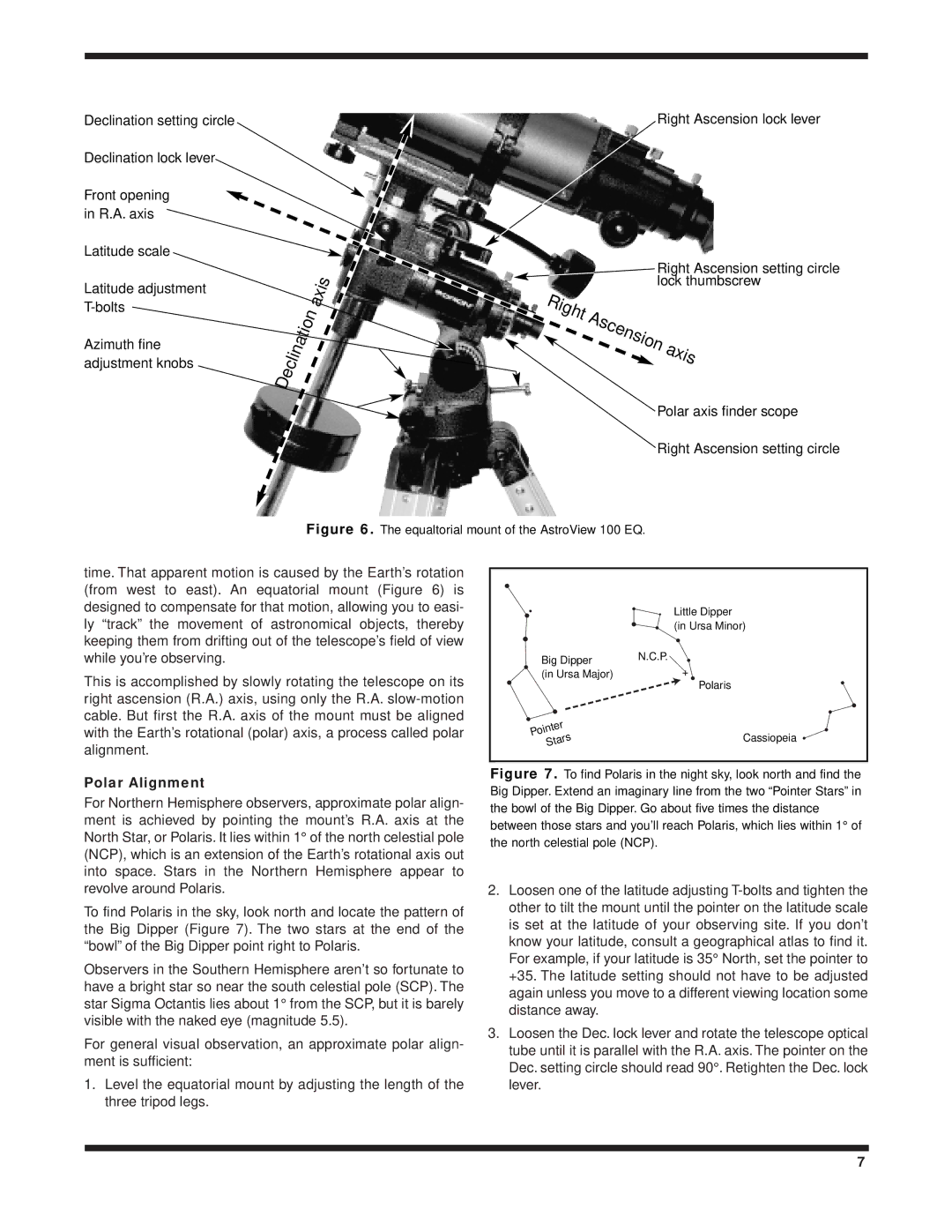100 EQ specifications
The Orion 100 EQ is a high-performance telescope designed for both novice and experienced astronomers. Combining precision engineering with user-friendly features, this telescope offers an exceptional observing experience.One of the standout features of the Orion 100 EQ is its 100mm diameter aperture, which allows for ample light gathering capabilities. This feature is essential for observing faint celestial objects, making it ideal for viewing planets, star clusters, and nebulae. The optics are made from high-quality glass and are fully coated to enhance light transmission and image clarity.
The computer-controlled equatorial mount of the Orion 100 EQ is another significant advancement in its design. This mount utilizes a durable, smooth operation mechanism that allows for easy tracking of celestial objects as they move across the night sky. The built-in dual axis slow motion controls provide astronomers with the ability to make fine adjustments to their viewing angle, ensuring that the object of interest remains centered in the eyepiece.
Another key technology included in the Orion 100 EQ is its robust and portable design. Weighing in at just under 25 pounds, the telescope is lightweight enough to transport easily but offers the stability necessary for steady views during observation. The adjustable aluminum tripod further enhances the telescope's stability while providing a sturdy platform for observers.
For beginners, the Orion 100 EQ is user-friendly and easy to set up. The telescope comes with a detailed instruction manual that guides users through the assembly process. Moreover, Orion includes a selection of eyepieces and a finderscope to assist users in locating celestial objects quickly. A 25mm Plössl eyepiece and a 10mm Plössl eyepiece come standard, allowing for a range of magnifications suitable for various observing conditions.
In terms of characteristics, the Orion 100 EQ stands out with its solid build quality and intuitive design. Its sleek black finish not only adds to its aesthetic appeal but also ensures both durability and resistance to weather conditions. The telescope's user-friendly nature, combined with its impressive optical performance, makes it a perfect choice for astronomy enthusiasts.
Overall, the Orion 100 EQ is a versatile telescope that caters to a wide audience. Whether you are a novice taking your first steps into astronomy or an experienced observer seeking a reliable tool for deep-sky exploration, the Orion 100 EQ promises to deliver an outstanding visual experience and a deeper connection with the cosmos. With its thoughtfully designed features and technologies, it is indeed a worthwhile investment for anyone passionate about stargazing.

